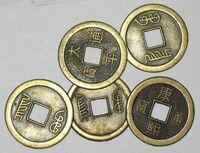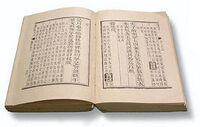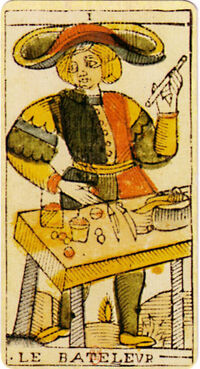All styles of taekwondo make extensive use of symbolism to hark back to traditions of Korean culture.
ATA Symbolism
TBD
ITF Symbolism
For ITF Taekwon-do, forms are generally named after famous people in Korean history.
- Chon-Ji (or Cheon-Ji) - refers to "Heaven & Earth"
- Dan-Gun - Named after Dan-Gun, the legendary founder of Korea (in 2,333 BC). Read more on Wikipedia
- Do-San - Named after the alias for the Korean patriot, Ahn Chang-Ho (1876-1938). Read more on Wikipedia
- Won-Hyo - Named after Won-Hyo, a monk who introduced Buddhism to Korea (Silla Dynasty) in 686 AD. Read more on Wikipedia
- Yul-Gok - Named after the pseudonym for the philosopher, Yi I, who has been nicknamed the Confucius of Korea (1536-1584 AD). Read more on Wikipedia
- Joong-Gun (or Jung-Geun) - Named after Ahn Joong-Gun, a Korean patriot who assassinated the first Japanese governor-general of Korea (Hiro Bumi Ito). Read more on Wikipedia
- Toi-Gye - Named after the pseudonym for a famous neo-Confucius scholar, Yi Hwang. Read more on Wikipedia
- Hwa-Rang - Named after the Hwa-Rang, an elite youth group during the Silla Dynasty. Read more on Wikipedia
- Choong-Moo (or Chung-Mu) - Named after the posthumous title for the famous Korean admiral Yi Sun-sin of the Yi Dynasty. He is also famous for developing the Korean turtle ship. Read more on Wikipedia
- Kwang-Gae (or Gwang-Gae) - Named after Kwang-Gae Toh-Wang (also known as Gwanggaeto), a famous king from the Goguryeo Dynasty who conquered much of northern Asia in the late 300s and early 400s AD. read more on Wikipedia
- Po Eun - Named after the pseudonym for a famous neo-Confucius scholar, Jeong Mongju, who lived in the Goryeo Dynasty. Read more on Wikipedia
- Gae-Baek (or Gye-Baek) - Named after Gae-Baek, a famous general from the Baek Je Dynasty (660 AD). Read more on Wikipedia
See also: Taekwondo History
WTF Symbolism

I Ching coins

I Ching, the Book of Changes

The I Ching plays a role similar to tarot cards in Western culture
For WTF-style taekwondo, symbolism is primarily drawn from the I Ching. The I Ching is an ancient Chinese text that describes a method of divination (i.e., fortune-telling and spiritual question-answering) based on 64 hexagrams. For example, a western-counterpart would be a divination method such as tarot cards.
- Each I Ching hexagram is made up of two trigrams
- A trigram is a set of three solid or broken lines, such as those shown below
- Each trigram and each hexagram is assigned a set of meanings
Coins or tokens could be tossed to represent solid or broken lines. The sequence of solid and broken lines specifies a trigram. Each trigram has a series of meanings. Two trigrams taken together form a hexagram; each hexagram also has a defined set of meanings. The meanings of the hexagrams are documented in a book called the I Ching, or Book of Changes. The Book of Changes is thought to have been written at least three thousand years ago!
The trigrams are called gwae and there are eight of them. Recall that the sino-Korean word for eight is pal. So the eight trigrams are the pal gwae. This is the name chosen for the eight color-belt forms originally used by WTF Taekwondo: Pal Gwae, the Eight Trigrams.
Four of the trigrams are also used on the South Korean flag: the sky, the ground, fire, and water, remeniscent of the ancient European tradition of referring to those four elements as the fundamental building blocks of all things.
| Trigram | Nature | Direction | Family | Body | Attribute | State | Animal |
|---|---|---|---|---|---|---|---|
| ☰ | The Sky, the Heavens | Northwest | Father | Head | Strong | Creative | Horse |
| ☱ | Lake | West | Third Daughter | Mouth | Pleasure | Tranquility, Devotion | Sheep, Goat |
| ☲ | Fire | South | Second Daughter | Eye | Light-Giving | Clarity, Adaptibility | Pheasant |
| ☳ | Thunder | East | First Son | Foot | Inspring Movement | Initiative | Dragon |
| ☴ | Wind | Southeast | First Daughter | Thigh | Penetrating | Gentle Entrance | Fowl |
| ☵ | Water | North | Second Son | Ear | Dangerous | In Motion | Pig |
| ☶ | Mountain | Northeast | Third Son | Hand | Resting | Completion | Wolf, Dog |
| ☷ | The Earth, the Ground | Southwest | Mother | Abdomen | Devoted | Receptive | Cow |

The Taegeuk, representing the unity of opposites

The Sam Taegeuk, representing the Heavens, the Earth, and Man - the sources of all change in the universe
In 1972, subsequent to the use of the palgwae poomsae, a new set of WTF forms was defined. These are called the taegeuk forms. The word taegeuk refers to the Korean version of the "yin and yang" symbol, the red-and-blue circle at the center of the Korean flag. In Korea, the "yin and yang" are called eum and yang. The taegeuk symbol denotes the concept of "unity of opposites." In other words, it represents the concept that things which seem to be polar opposites are in fact the same thing, two sides of the same coin.
There is a related symbol called the Sam Taegeuk (recall that sam means three in the sino-Korean numbering system). This symbol has a completely different meaning than the Taegeuk however. The Sam Taegeuk represents the Heavens, the Earth, and Man -- the three sources of all change in the universe.